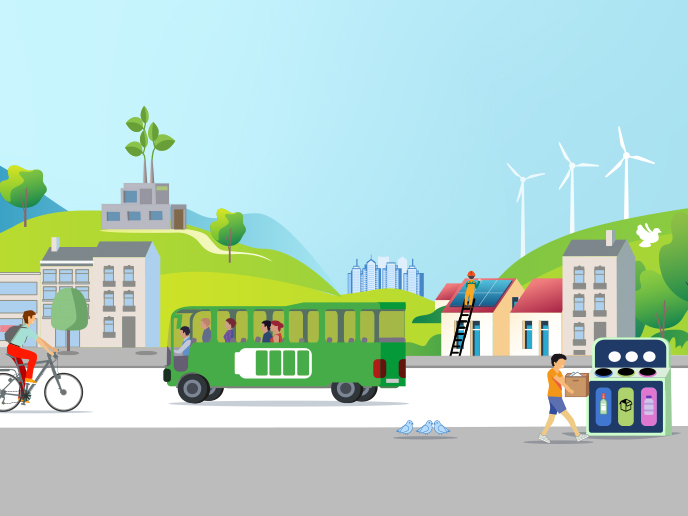Climate neutrality: Pathways for achieving the European Green Deal Objectives
This work provides a solid bedrock on which policymakers, business and society can make informed choices about the best route to ending the reliance on fossil fuels and building a greener, cleaner and more equitable future for Europe. A climate-neutral Europe means achieving net zero emissions of greenhouse gases such as carbon dioxide and methane. This transition is essential if we want to limit global warming to well below 2 °C and avoid catastrophic climate change. It requires a deep transformation across all economic sectors and entire societies. Dramatic reductions in burning fossil fuels, hand in hand with increased investments in green technologies, clean transport, a more efficient and circular industrial base, climate-friendly food systems, and massive upscaling of renewable energy capacity will be at the heart of achieving this goal. Commensurate and maintained societal momentum will need to support this Herculean effort. And of course, finance must be mobilised to enable such transition. Meeting these objectives demands a raft of legislative and social instruments. The European Green Deal announced by the European Commission in 2019 lays the groundwork for the changes needed. It is a comprehensive road map that details actions to steer Europe towards climate neutrality. The Green Deal also outlines the investments needed and financing tools available, as well as concrete steps on how to ensure a just and inclusive transition that benefits everyone. The EU’s targets are set by the European Climate Target Plan, which identifies the need to reduce greenhouse emissions by 55 % by 2030 to achieve climate neutrality by 2050. To capture political determination and provide directionality, the European Climate Law turns this commitment into a legal obligation and a trigger for the investment needed. This year, the Commission set out the Fit for 55 package, a set of proposals for implementing this Climate Law. The package identifies legislative opportunities across the transport, energy and housing sectors. Meanwhile, the Climate Pact brings individual citizens together to share information, debate and act on the climate crisis, placing people at the heart of building a more sustainable Europe. Horizon 2020 – and its successor Horizon Europe – are crucial for the implementation of these climate policies, and at the same time the wider Sustainable Development Goals. The projects featured in this Pack are drawn from Horizon 2020’s dedicated Societal Challenges funding stream. Embracing the complex interplay between the energy system, the economy and consumer behaviour, the research highlighted in the Pack reveals how policies can best direct the EU towards climate neutrality and how investment can be mobilised. All of them support the transition to a carbon-neutral society in one way or another. Reimagining the energy sector is a crucial part of the process, and a task taken up by the Open ENTRANCE, SENTINEL and REINVENT projects, the last of which went as far as designing a fictional city of the future called Notterdam. NAVIGATE, LOCOMOTION and COP21:RIPPLES are three of the projects delving into the use of integrated assessment models that are central to exploring decarbonisation pathways, themselves further investigated in detail by researchers working across the INNOPATHS, ENGAGE, DEEDS and CD-LINKS projects. And finally, an equitable transition is key to maintaining the support of the public to deliver on the Green Deal’s motto “to leave no one behind”. The EUCalc, SOCLIMPACT, COACCH and PARIS REINFORCE projects all focus on the impacts of climate change, and of carbon neutrality policies, on those most affected.



